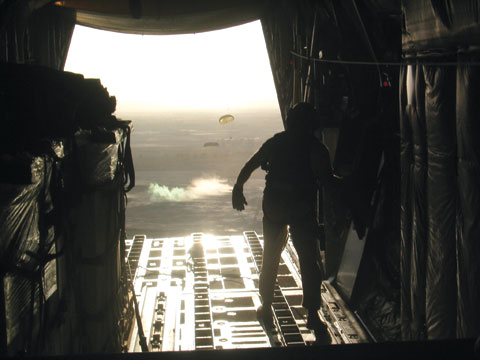Wired for War: The Robotics Revolution and Conflict in the 21st Century
P.W. Singer
Penguin Books, Reprint Edition (2009)
Paperback: 512 pages
ISBN-10: 0143116843
In 2009, P. W. Singer’s book Wired for War: The Robotics Revolution and Conflict in the 21st Century received widespread acclaim for its entertaining and varied exploration of issues surrounding the use of robots in the military. The book received international attention, becoming a best-seller and Financial Times’ nonfiction book of the year. [1]
It is easy to see why the book was so well received. Singer’s tone is oddly lighthearted and uses transparent language. His frequent use of amusing anecdotes, expert interviews, pop-culture references, and the occasional lowbrow joke make Wired for War an enjoyable and informative introduction to the topic of robotic warfare.
The book is filled with illuminating side discussions on a variety of topics, including the influence of science fiction on the direction of real science to how military bomb-disposal robots morphed into mass-market vacuum cleaners.
Despite the breadth of the topics covered, there is an overarching thesis. Singer believes that military robots are a ‘‘killer app,’’—technology capable of doing to warfare what the iPod did to music. [2]
The book begins with a basic overview of robotics use in the military, including an overview as far back as the clockwork automatons of the Enlightenment, to the smart bombs of the Gulf War, following through to present day. The military robot models and their functions are explained using examples like the famous Predator drone and the bomb-disarming Talon miniature tank.
Wired for War also paints a picture of the robotics industry as a field split between form and function, cutting-edge and cut-rate. Singer explores this dichotomy through the lens of the rivalry between the two leading providers of land-based military robots for the United States Army, Foster-Miller and iRobot. He draws an unspoken parallel between them and the more famous ‘Mac vs. PC’ debate.
The first section also lays out the beginning of Singer’s overarching thesis. He argues that robots are, or will soon become, more effective than people in almost every aspect of war, especially those that are “dirty, dull and dangerous.” They are untroubled by radiation, tedium or fear. [3]
Singer argues that economics will be a deciding factor in the continued use of robots in war. For the price of one F-22, a top-of-the line fighter jet, the American Military could buy 85 Predator drones.
Robots are also far more expendable than people, a point made clear by a quote Singer attributes to a U.S. chief petty officer:
“When a robot dies, you don’t have to write a letter to its mother.” [4]
Singer cautions against western governments assuming that robots will provide them with a road to long-lasting military dominance.
Robots are subject to the market’s influence. Not only are they getting more powerful, they are also becoming less expensive and more widely available—and that is dangerous. Moreover, robots are not immune to cyberterrorism—or even treason, as in the case of one American PackBot bomb-disposal unit that became a turncoat bomb placement unit after being captured and reprogramed by insurgents in Iraq. When American robots are unavailable, remote-controlled toys have been used for this purpose.
Singer suggests that robots will change the politics of war. Not only can robots make wars cheaper, they can also make them more popular. Voters in democratic countries tend to be averse to reports of battlefield deaths, making politicians more wary of putting soldiers in harm’s way. Voters are not so concerned about robot casualties. Equally, with fewer first-hand accounts of conflict, they will be less swayed by stories of the plight of civilians caught up in conflict.
In Wired for War, Singer recounts the story of an Italian general who, in 1921, announced that warplanes had made all other weapons obsolete. The man was, of course, soon made a fool and stands as a lesson to anyone who makes bold predictions about the future of conflict.
Singer’s predictions, however, appear to have stood the test of time. Today, the United States’ military has dramatically increased its demands on drones, requiring them to perform evermore complex tasks. [5] On the home front, resistance to the use of drones is negligible, at least as an electoral issue—neither of the major political parties stands against their use in foreign wars.
For anyone interested in the discussion surrounding the use of drones on the battlefield, Wired for War remains a worthwhile, in-depth and darkly amusing read.
Gideon Scanlon completed an M.A. in International journalism in London, specializing in print and online journalism and writing on the problems plaguing the peace-building movement in the middle-east. He also holds an Honours B.A. History from the Durham University.








